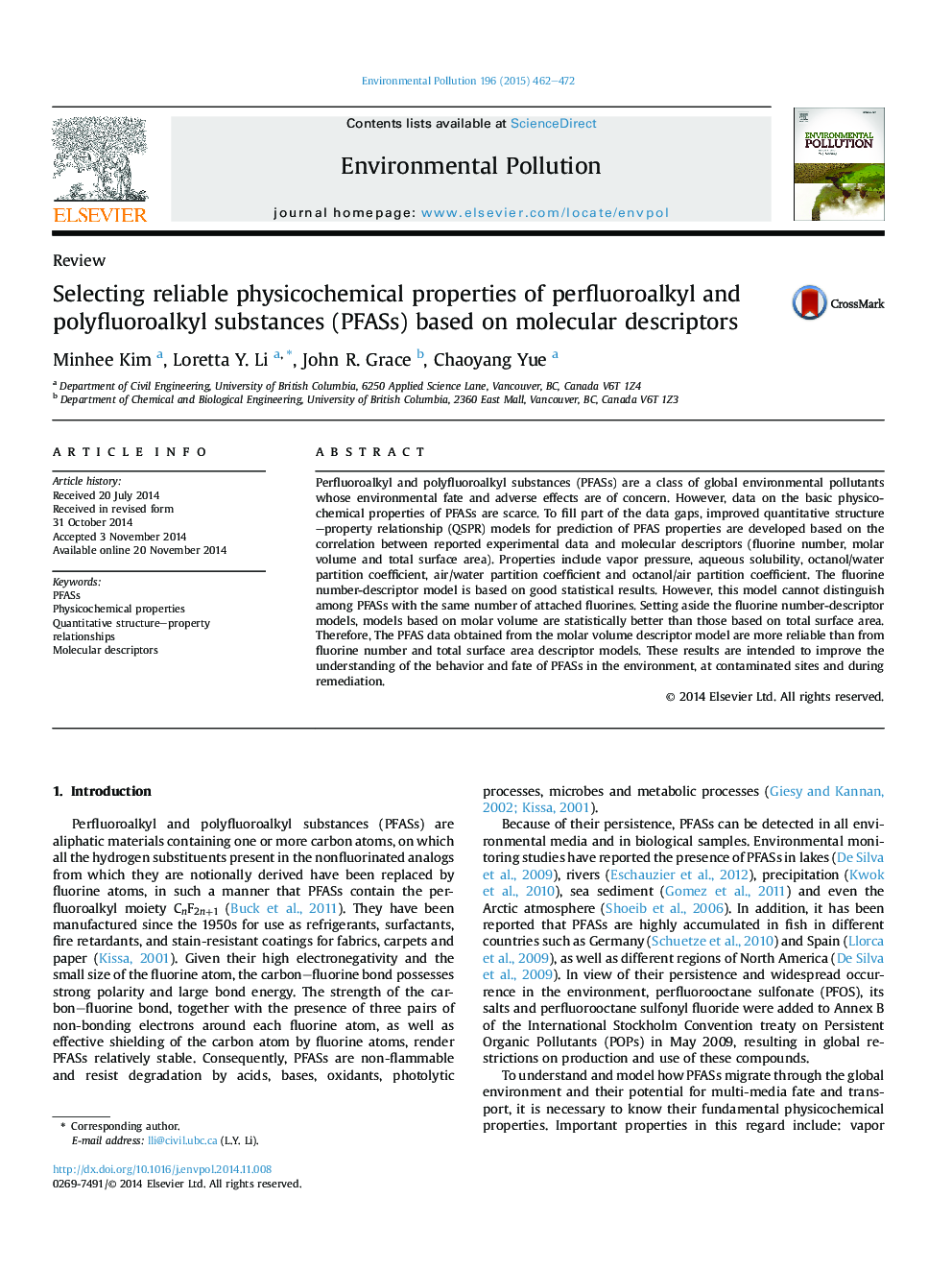| کد مقاله | کد نشریه | سال انتشار | مقاله انگلیسی | نسخه تمام متن |
|---|---|---|---|---|
| 6318000 | 1619176 | 2015 | 11 صفحه PDF | دانلود رایگان |
عنوان انگلیسی مقاله ISI
Selecting reliable physicochemical properties of perfluoroalkyl and polyfluoroalkyl substances (PFASs) based on molecular descriptors
دانلود مقاله + سفارش ترجمه
دانلود مقاله ISI انگلیسی
رایگان برای ایرانیان
کلمات کلیدی
موضوعات مرتبط
علوم زیستی و بیوفناوری
علوم محیط زیست
شیمی زیست محیطی
پیش نمایش صفحه اول مقاله

چکیده انگلیسی
Perfluoroalkyl and polyfluoroalkyl substances (PFASs) are a class of global environmental pollutants whose environmental fate and adverse effects are of concern. However, data on the basic physicochemical properties of PFASs are scarce. To fill part of the data gaps, improved quantitative structure-property relationship (QSPR) models for prediction of PFAS properties are developed based on the correlation between reported experimental data and molecular descriptors (fluorine number, molar volume and total surface area). Properties include vapor pressure, aqueous solubility, octanol/water partition coefficient, air/water partition coefficient and octanol/air partition coefficient. The fluorine number-descriptor model is based on good statistical results. However, this model cannot distinguish among PFASs with the same number of attached fluorines. Setting aside the fluorine number-descriptor models, models based on molar volume are statistically better than those based on total surface area. Therefore, The PFAS data obtained from the molar volume descriptor model are more reliable than from fluorine number and total surface area descriptor models. These results are intended to improve the understanding of the behavior and fate of PFASs in the environment, at contaminated sites and during remediation.
ناشر
Database: Elsevier - ScienceDirect (ساینس دایرکت)
Journal: Environmental Pollution - Volume 196, January 2015, Pages 462-472
Journal: Environmental Pollution - Volume 196, January 2015, Pages 462-472
نویسندگان
Minhee Kim, Loretta Y. Li, John R. Grace, Chaoyang Yue,